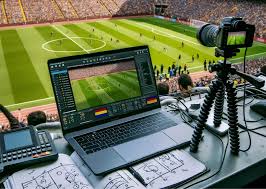
20 Feb STRATEGY, DATA, AND VISION: THE IMPORTANCE OF DATA IN MODERN FOOTBALL ACCORDING TO FEDERICO BARNI
Six months ago, Davide Nicola’s staff achieved yet another remarkable survival, this time with Empoli, adding another chapter to their incredible series of successes after Crotone, Genoa, Torino, and Salernitana. Arriving in January 2024 in a difficult situation— with the team going through its third coaching change of the season and winless for two months— Nicola and his team managed to turn things around, securing three wins and three draws in their first six matches.
Today, Federico Barni and his staff have embarked on a new adventure with Cagliari, leveraging the extensive experience he has gained over the years in Serie A. In this interview, he shares insights into his work, the evolution of technology in football, and the increasingly central role of the match analyst.
Federico, how do you manage to impact a team’s performance so quickly?
“The key is setting priorities. As soon as we join a new team, we must immediately identify what needs to be done to reverse the negative trend. This process actually begins well before taking the job: even when we are without a team, we analyze several potential clubs that might call us, studying their gameplay and preparing intervention strategies. It’s a constant effort that involves the entire staff.”
Every head coach has different tactical ideas. How do you get players to adapt quickly?
“It all starts with thorough preparation. Davide has excellent communication skills, which helps accelerate the assimilation of new ideas. Additionally, our tactical approach is always well-defined yet flexible and adaptable to the situation. When you step into a new environment, you might encounter a reality different from what you expected from the outside, which is why adaptability is crucial.”
How do you stay up-to-date and what tools do you use to gather information?
“I constantly monitor three to five teams, analyzing their matches and statistical data. I maintain an updated database with detailed information, allowing me to quickly identify strengths and weaknesses. Match analysis has become increasingly sophisticated thanks to new technologies.”
How has the role of the match analyst evolved over the last 10 years?
“It has become indispensable, not only in Serie A but also in lower divisions like Serie D and Eccellenza. Today, professional coaching staffs often include multiple match analysts, highlighting the growing workload. The essential tools? Video analysis platforms and data collection software, which have revolutionized the way we work. For example, platforms like SportAnalytics allow us to integrate tracking data with events and videos to obtain precise insights in a very short time.”
In which aspects do technology help you the most? And in what areas do you rely on intuition?
“Technology is crucial in every aspect of this job. However, human observation remains fundamental for verifying or interpreting data. Often, we start with numbers and then confirm on the field whether the data truly reflects reality.”
Have you ever made decisions based purely on data?
“Many times. One example? In a match, we faced a team that was the best in the league at utilizing ‘cutbacks’. Knowing this in advance allowed us to take specific defensive measures to counteract this threat effectively.”
What technological advancements do you expect in the coming years?
“I believe that with technological advancements, it will become possible to track the evolution of a coach’s playing style over time. Not only in terms of the team they are currently managing, but also by analyzing how their approach has changed, understanding where these adjustments have impacted results—positively or negatively—and identifying their core tactical principles across different teams. This would be highly useful for improving as a coaching staff and for club executives seeking a coach who aligns with their club’s vision.”
Are Italian clubs open to using technology?
“Absolutely. Technology is a fundamental tool for bridging the gap between teams of different quality levels and for gaining a competitive advantage. We use it daily to enhance our work.”

